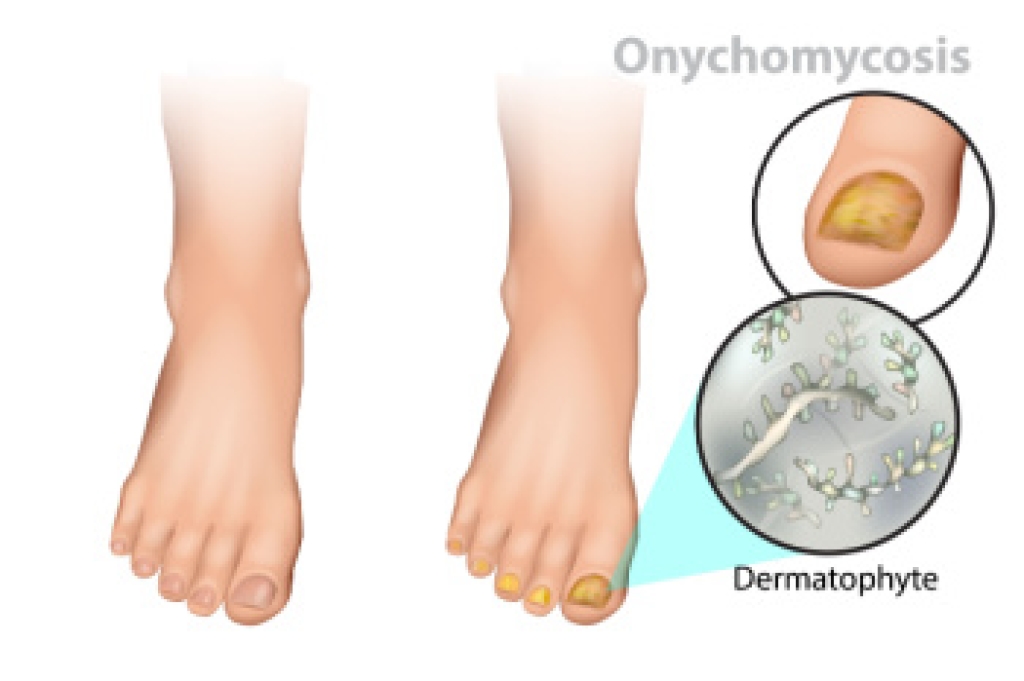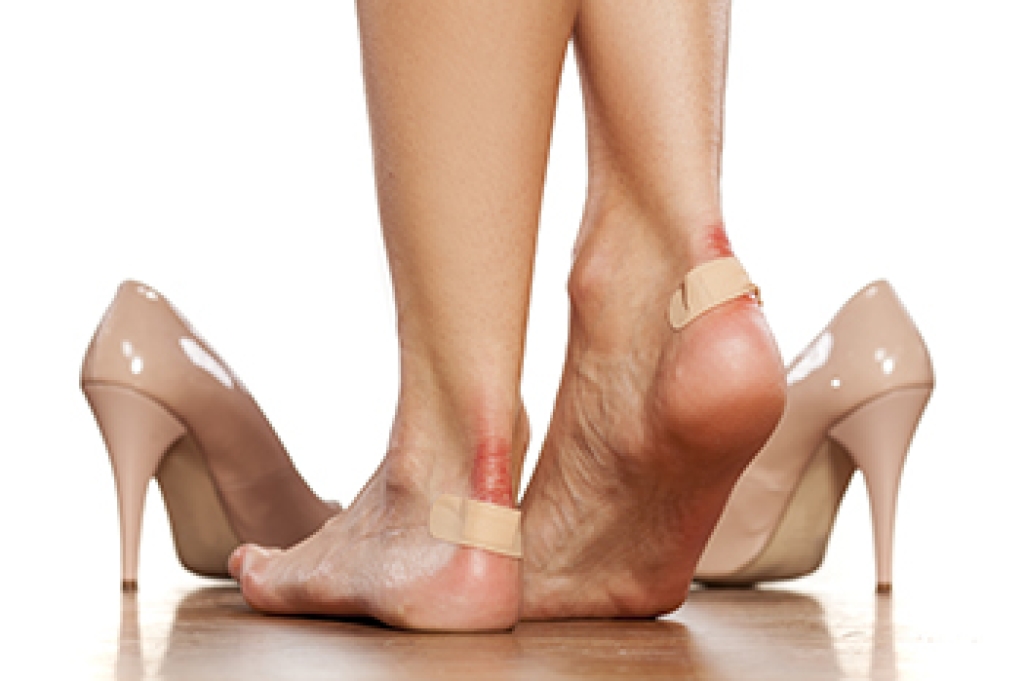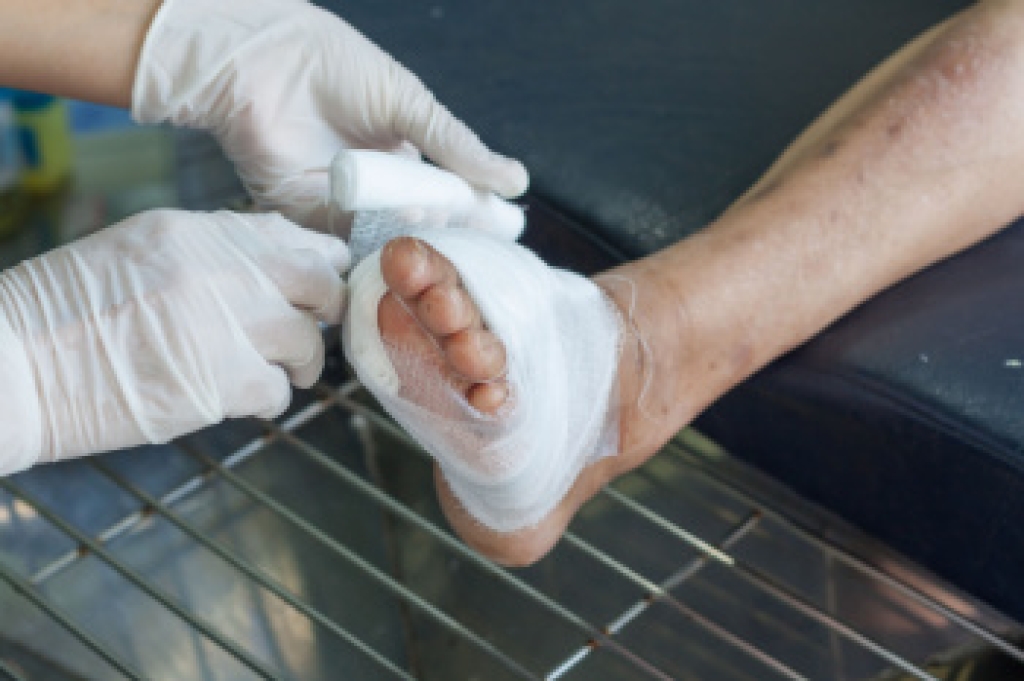Blog
Understanding What Toenail Fungus Is

Toenail fungus is an infection that develops when fungi enter the nail through small cracks, causing changes in color, thickness, and texture. Risk factors include aging, excessive moisture, poor circulation, and a weakened immune system. Coexisting conditions such as diabetes and vascular disease increase vulnerability. Common symptoms include discoloration, crumbling edges, thick nails, and a foul odor. Causes often involve walking barefoot in damp public areas or wearing tight shoes that trap moisture. A podiatrist can diagnose the condition, provide advanced treatment options, and prevent the infection from spreading. If you have signs of toenail fungus, it is suggested that you schedule an appointment with a podiatrist who can offer effective treatment solutions that will restore healthy nails and protect your overall foot health.
For more information about treatment, contact one our of podiatrists of The Foot and Ankle Specialists. Our doctors can provide the care you need to keep you pain-free and on your feet.
Toenail Fungus Treatment
Toenail fungus is a condition that affects many people and can be especially hard to get rid of. Fortunately, there are several methods to go about treating and avoiding it.
Antifungals & Deterrence
Oral antifungal medicine has been shown to be effective in many cases. It is important to consult with a podiatrist to determine the proper regiment for you, or potentially explore other options.
Applying foot powder on the feet and shoes helps keep the feet free of moisture and sweat.
Sandals or open toed shoes – Wearing these will allow air movement and help keep feet dry. They also expose your feet to light, which fungus cannot tolerate. Socks with moisture wicking material also help as well.
If you have any questions please contact our offices located in Houston and Deer Park, TX . We offer the newest diagnostic and treatment technologies for all your foot and ankle needs.
How Blisters Form on the Feet

Blisters on the feet develop when repeated friction or pressure causes the outer layer of skin to separate from the underlying layers, allowing fluid to collect in the space between. This clear fluid cushions the damaged tissue and protects it as it heals. Wearing shoes that are too tight or lack adequate support can cause blisters on the toes, heels, or sides of the feet. Excess moisture, long-distance walking, and high-friction activities can also contribute. Sometimes, blisters form due to burns, allergic reactions, or infections that affect the skin on the feet. A podiatrist can evaluate the cause, drain painful or infected blisters under sterile conditions, and recommend protective footwear or custom padding to prevent recurrence. If you have a painful or infected blister on your foot, it is suggested that you promptly schedule an appointment with a podiatrist for a diagnosis and safe treatment options.
Blisters may appear as a single bubble or in a cluster. They can cause a lot of pain and may be filled with pus, blood, or watery serum. If your feet are hurting, contact one our of podiatrists of The Foot and Ankle Specialists. Our doctors can provide the care you need to keep you pain-free and on your feet.
Foot Blisters
Foot blisters are often the result of friction. This happens due to the constant rubbing from shoes, which can lead to pain.
What Are Foot Blisters?
A foot blister is a small fluid-filled pocket that forms on the upper-most layer of the skin. Blisters are filled with clear fluid and can lead to blood drainage or pus if the area becomes infected.
Symptoms
(Blister symptoms may vary depending on what is causing them)
- Bubble of skin filled with fluid
- Redness
- Moderate to severe pain
- Itching
Prevention & Treatment
In order to prevent blisters, you should be sure to wear comfortable shoes with socks that cushion your feet and absorb sweat. Breaking a blister open may increase your chances of developing an infection. However, if your blister breaks, you should wash the area with soap and water immediately and then apply a bandage to the affected area. If your blisters cause severe pain it is important that you call your podiatrist right away.
If you have any questions, please feel free to contact our offices located in Houston and Deer Park, TX . We offer the newest diagnostic and treatment technologies for all your foot care needs.
Dangers of Diabetic Foot Infections

One of the most dangerous complications linked to diabetes is a foot infection. Diabetic foot infections can progress quickly and threaten overall limb health. Once the skin is broken, harmful bacteria may enter, leading to infections that range from mild skin involvement to deep tissue or bone infections such as osteomyelitis. Neuropathy, which reduces sensation in the feet, and poor circulation make patients more vulnerable to developing wounds and ulcers. Common problems include cellulitis, abscesses, septic arthritis, and necrotizing fasciitis, which can severely damage the feet and ankles. Untreated infections may result in prolonged hospitalization, severe disability, or possible limb loss. A podiatrist can perform an exam, order imaging when necessary, debride infected tissue, and determine if surgery is needed to control the infection. Early treatment is vital to protect the feet and prevent serious complications. If you have signs of a diabetic foot infection, it is suggested that you make an immediate appointment with a podiatrist.
Diabetic foot care is important in preventing foot ailments such as ulcers. If you are suffering from diabetes or have any other concerns about your feet, contact one our of podiatrists from The Foot and Ankle Specialists. Our doctors can provide the care you need to keep you pain-free and on your feet.
Diabetic Foot Care
Diabetes affects millions of people every year. The condition can damage blood vessels in many parts of the body, especially the feet. Because of this, taking care of your feet is essential if you have diabetes, and having a podiatrist help monitor your foot health is highly recommended.
The Importance of Caring for Your Feet
- Routinely inspect your feet for bruises or sores.
- Wear socks that fit your feet comfortably.
- Wear comfortable shoes that provide adequate support.
Patients with diabetes should have their doctor monitor their blood levels, as blood sugar levels play such a huge role in diabetic care. Monitoring these levels on a regular basis is highly advised.
It is always best to inform your healthcare professional of any concerns you may have regarding your feet, especially for diabetic patients. Early treatment and routine foot examinations are keys to maintaining proper health, especially because severe complications can arise if proper treatment is not applied.
If you have any questions, please feel free to contact our offices located in Houston and Deer Park, TX . We offer the newest diagnostic and treatment technologies for all your foot care needs.
Caring for Foot Fungus in Children and Infants

Although rare, foot fungus can affect even young children and infants, often appearing as dry, itchy, or peeling skin between the toes or on the soles. The infection thrives in warm, moist environments, such as sweaty socks or closed shoes. In babies, damp feet from prolonged use of booties or footed pajamas can create similar conditions. Such an infection can also come from using unclean nail clippers to trim a child’s toenails. A podiatrist can diagnose the infection and recommend child-safe antifungal creams or sprays. Keeping the feet clean and dry, using clean nail cutting tools, changing socks frequently, and allowing feet to air out each day are important steps for recovery. For infants, using breathable fabrics and avoiding tight coverings helps prevent moisture buildup. Parents should avoid home remedies that could irritate delicate skin. Instead, if your infant or child has signs of a fungal infection on their feet, it is suggested that you take them to see a podiatrist for gentle, effective treatment, and to help stop the fungus from spreading or returning.
Making sure that your children maintain good foot health is very important as they grow. If you have any questions, contact one our of podiatrists of The Foot and Ankle Specialists. Our doctors can provide the care you need to keep you pain-free and on your feet.
Keeping Children's Feet Healthy
Having healthy feet during childhood can help prevent medical problems later in life, namely in the back and legs. As children grow, their feet require different types of care. Here are some things to consider...
Although babies do not walk yet, it is still very important to take care of their feet.
Avoid putting tight shoes or socks on his or her feet.
Allow the baby to stretch and kick his or her feet to feel comfortable.
As a toddler, kids are now on the move and begin to develop differently. At this age, toddlers are getting a feel for walking, so don’t be alarmed if your toddler is unsteady or ‘walks funny’.
As your child gets older, it is important to teach them how to take care of their feet.
Show them proper hygiene to prevent infections such as fungus.
Be watchful for any pain or injury.
Have all injuries checked by a doctor as soon as possible.
Comfortable, protective shoes should always be worn, especially at play.
If you have any questions, please feel free to contact our offices located in Houston and Deer Park, TX . We offer the newest diagnostic and treatment technologies for all your foot care needs.

